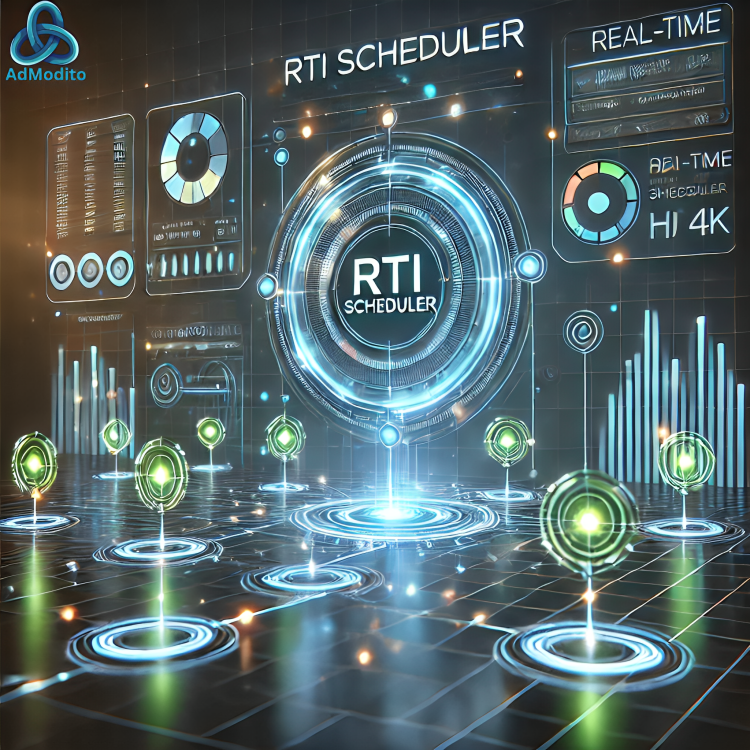In today’s fast-paced business environment, optimizing workflows and enhancing productivity is a necessity. Enter the RTI Scheduler, a revolutionary tool designed to automate and simplify routine tasks. Whether you’re managing corporate processes, healthcare appointments, or IT workflows, this scheduler is an essential asset for improving efficiency.
This comprehensive guide dives deep into the functionality, benefits, and best practices of utilizing an RTI Scheduler, helping you harness its full potential.
What is an RTI Scheduler?
An RTI Scheduler (Real-Time Interactive Scheduler) is a system designed to manage tasks, appointments, or data flow in real-time. It facilitates the seamless allocation of resources, task prioritization, and automated scheduling based on predefined parameters. Unlike traditional schedulers, RTI solutions emphasize real-time updates, ensuring schedules remain dynamic and adaptable.
Key Features of RTI Scheduler
1. Real-Time Data Processing
The hallmark of an RTI Scheduler is its ability to process and update information instantly. This ensures that users always work with the most current data.
2. Dynamic Resource Allocation
By analyzing available resources and prioritizing tasks, the scheduler ensures optimal utilization, reducing redundancies and bottlenecks.
3. Scalability
RTI Schedulers can adapt to the needs of various industries, from small businesses to large enterprises.
4. User-Friendly Interfaces
Modern RTI solutions come equipped with intuitive dashboards, enabling seamless navigation and efficient task management.
5. Integration Capabilities
These schedulers integrate effortlessly with other software and platforms, ensuring compatibility and enhanced functionality.
Benefits of Using an RTI Scheduler
1. Enhanced Productivity
Automating repetitive tasks allows teams to focus on high-priority objectives, fostering productivity.
2. Improved Accuracy
Manual scheduling often leads to errors. The RTI Scheduler minimizes these risks through precise automation and data analysis.
3. Real-Time Insights
With live updates and analytics, decision-makers gain valuable insights to optimize workflows further.
4. Cost-Efficiency
By reducing downtime and errors, businesses save resources, making RTI Schedulers a cost-effective solution.
5. Better Customer Experience
Industries like healthcare and customer service benefit from real-time scheduling, ensuring timely appointments and reduced wait times.
Applications of RTI Scheduler
1. Healthcare
Hospitals and clinics use RTI Schedulers to manage patient appointments, staff schedules, and resource allocation effectively.
2. IT and Tech Industries
From server maintenance to software updates, RTI tools streamline IT workflows, ensuring minimal disruption.
3. Logistics and Transportation
RTI Schedulers optimize delivery routes and manage fleet schedules for maximum efficiency.
4. Education
Educational institutions use these tools to manage class schedules, exams, and administrative tasks.
5. Corporate Management
In corporate environments, RTI Schedulers streamline meetings, project timelines, and team workflows.
How to Implement an RTI Scheduler Effectively
1. Define Your Goals
Understand what you want to achieve with the scheduler, be it reducing manual tasks, improving resource allocation, or enhancing communication.
2. Train Your Team
Ensure that your team is well-versed in using the RTI Scheduler, including its advanced features.
3. Customize According to Needs
Tailor the scheduler’s settings to align with your organization’s specific requirements.
4. Monitor and Optimize
Regularly review the scheduler’s performance and make adjustments to improve efficiency.
Top RTI Scheduler Software Options
1. Scheduler Pro
Ideal for healthcare and corporate environments, Scheduler Pro offers dynamic scheduling with real-time updates.
2. WorkflowMaster
A versatile tool that integrates with multiple platforms, making it perfect for IT and logistics sectors.
3. TimeTrackRTI
This solution focuses on employee management and productivity tracking, making it ideal for human resources.
Common Challenges and Solutions
1. Integration Issues
Many users face difficulties integrating RTI Schedulers with existing systems. Solution: Opt for schedulers with robust API capabilities.
2. Training Barriers
Without proper training, users may struggle to leverage all features. Solution: Provide detailed onboarding sessions and support materials.
3. Over-Reliance on Automation
While automation is beneficial, over-reliance can lead to inflexibility. Solution: Maintain a balance by using manual overrides when necessary.
FAQs
1. What industries benefit most from an RTI Scheduler?
Industries like healthcare, IT, logistics, and education gain significant advantages by optimizing their workflows and resource allocation.
2. Can RTI Schedulers integrate with other software?
Yes, most modern RTI Schedulers offer robust integration capabilities with platforms like ERP systems, CRMs, and project management tools.
3. Are RTI Schedulers cost-effective for small businesses?
Absolutely. While upfront costs might seem high, the long-term savings in time and resources make them a worthwhile investment.
4. How secure are RTI Schedulers?
Reputable RTI Schedulers use advanced encryption and security protocols to protect sensitive data.
5. How can I choose the best RTI Scheduler?
Consider your industry requirements, scalability, integration needs, and budget when selecting an RTI Scheduler.
Conclusion
The RTI Scheduler is more than just a time-management tool; it’s a comprehensive solution for streamlining workflows, enhancing productivity, and ensuring real-time accuracy. From healthcare to logistics, the applications are vast, and the benefits are undeniable. By investing in a reliable RTI Scheduler and implementing it effectively, businesses can stay ahead in today’s competitive landscape.
